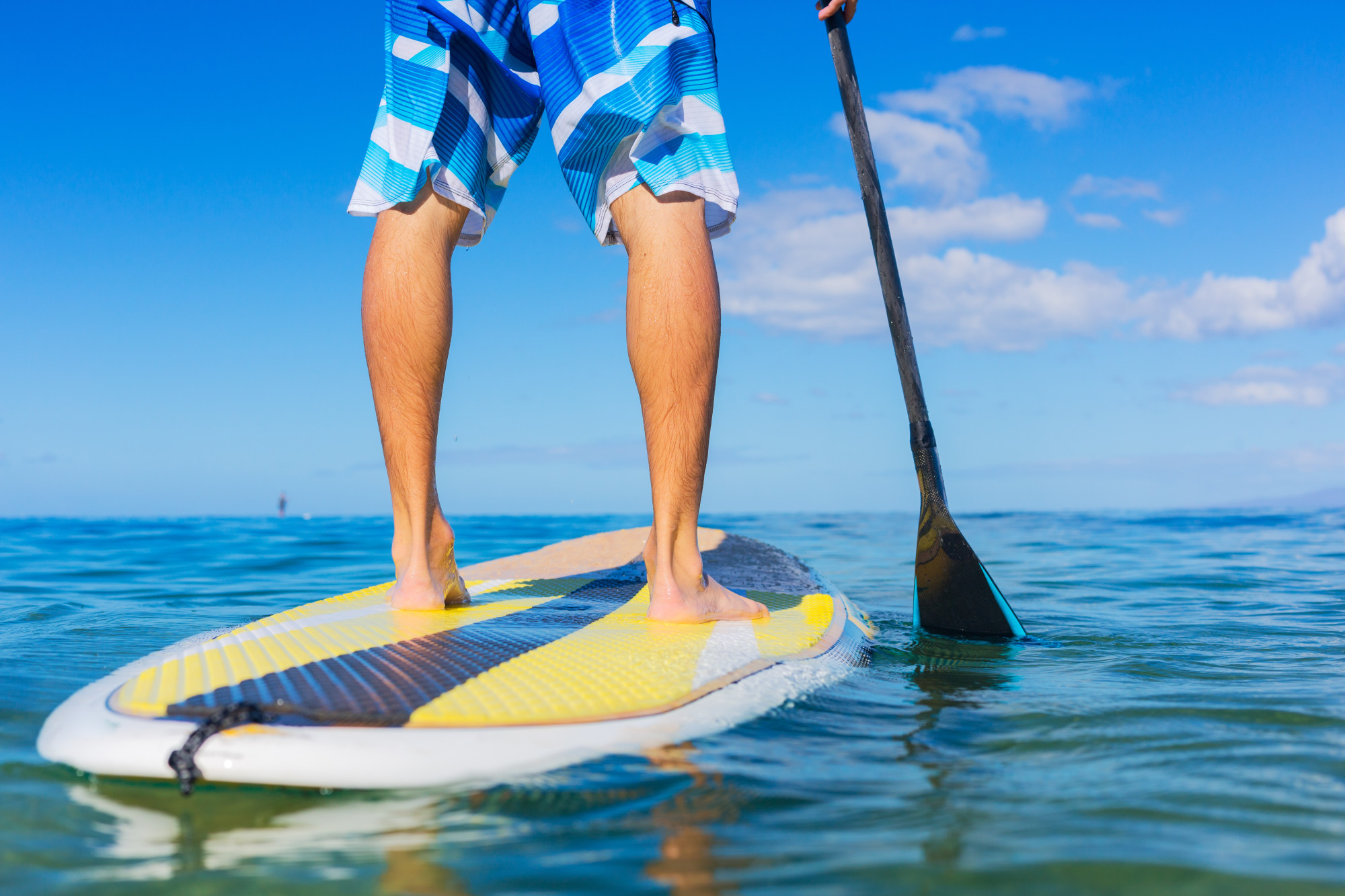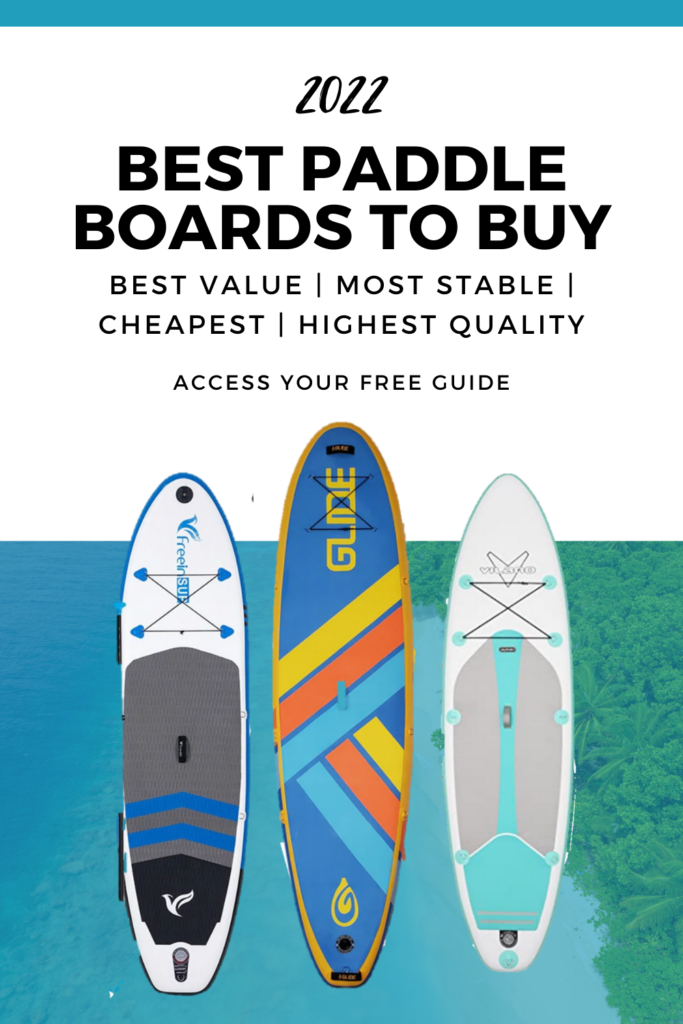This post may contain affiliate links. Commissions we earn from partner links on this page do not affect our opinions or evaluations. Our editorial content is based on thorough research and guidance from the editorial team.
Are you looking for a fun, yet relaxing, way to spend more time outdoors? Paddle boarding is one of the best hobbies you can have.
Not only does riding a paddle board provide your body with exercise and while improving balance and flexibility, but it gets you outdoors and into beautiful places. Spending time in nature, particularly in or on the water, comes with tons of physical and mental health benefits.
But in order to fully enjoy your paddleboarding adventures, you need to invest in the best paddleboard. There are many different types of boards, sizes available, and shapes to choose from.
It can be difficult to pick the right one. Keep reading our guide to choosing the best paddleboards so you can fully enjoy your time on the water.
Solid or Inflatable
Your first major decision is choosing between the main types of paddleboards; a solid stand up paddle board or an inflatable paddle board.
Solid paddle boards are the original paddle boards. They offer the best performance and weight ratings, come in a variety of different sizes and shapes, and are easier to balance and learn with.
If you are serious about paddleboarding, solid is the best choice. However, they take up a lot of space. You need a vehicle large enough to transport them to the water. And at home, you’ll need a place to store it, which is easier said than done.
If you live in a small home or apartment, you might not have the option to store a large paddle board. If that’s the case, inflatable paddle boards are perfect for you.
These pack down into a package small enough to store in the corner of your closet. They are easy to transport in any sized vehicle. And you can carry them long distances with ease. Inflatable paddle boards give you the option to hike into a serene, backcountry lake if you want to.
When fully inflated, these paddle boards feel durable and stiff, not like your standard pool toy. And due to the slightly softer feel of these, they are better for whitewater paddleboarding and for doing yoga on a paddle board.
Size
Once you know what type of paddle board you want to get, you’ll need to consider the sizing. The length and width of the board, overall volume, and weight rating are important to your comfort and enjoyment of the board.
Length and Width
Choosing the right paddle board length is crucial. You can find paddle boards that are less than 10 feet long and all the way up to 13 feet in length. Shorter boards are easier to turn and maneuver, making them a great option for paddle surfing. Kids will almost always prefer an 8-foot board.
Longer boards are better for paddling long distances, or for trying to paddle fast. They are more efficient in the water. Plus, they tend to be more stable and allow you to carry extra gear with you.
Width is an important consideration as well. Wider boards are more stable, offer more storage space for gear, and make it easier to do yoga. More narrow boards are better suited for racing and surfing, as they are easier to turn.
Of course, you’ll want to consider your own body, as well. Smaller individuals might not need an extra-wide board, while larger individuals more than likely will.
Volume
The longer, wider, and thicker the board, the higher the volume rating. A higher volume rating means that a board is more capable of floating with excess weight on top.
If you’d like to carry a lot of extra gear, such as camping supplies, food, or water, you may need to choose a longer or wider board to increase the volume.
Weight Rating
Every board has a maximum amount of weight it can safely carry. Adding weight above the rating can decrease performance or prevent the board from floating.
If you are only planning to use a board for exercise, yoga, or short paddle excursions, you can get a board that’s able to sustain just your body weight.
However, if you ever plan to use your paddle board to carry additional gear, or use it for longer paddling trips where you might need to carry food and water, then factor the extra weight into your board selection.
Shape
Paddle boards come in two main shapes, otherwise known as the hull. A planing hull is wide and flat and is meant to sit on top of the water. They are used by most beginner paddlers, as they are easier to maneuver and balance on.
Displacement hulls, on the other hand, are pointed on the front. These are more similar to the shape of a kayak rather than a surfboard. Rather than sitting on top of the water, these hulls slice through the water, displacing it as you go.
Due to the water displacement, these types of boards allow you to go faster and further with less effort. As such, they are often chosen by serious paddlers or those who plan to go camping or racing.
Fins
Most paddle boards come with fins. These are generally removable, replaceable, and customizable based on your preferences.
Fins are helpful because they keep you paddling straight and add stability to the water. The single fin is the most common on paddle boards.
You can also find boards that allow for the use of three identical fins or one large fin surrounded by two smaller fins.
Choose a board that allows you to remove the fin, which is helpful for transportation and storage.
Accessories
Some barebones paddle boards don’t come with any options for adding accessories. But certain models come with attachment points, making it easy to customize your board to suit your needs.
Some people use these to add fishing rod holders. Others use them to mount a seat to the paddle board. If you plan to use your board in a variety of different ways, choosing a board with mounting points will give you added flexibility.
Choosing the Best Paddleboard for You
Ultimately, the best paddleboard for you will depend on your skill level, your size, how much storage space you have, and the way you plan to use the board.
Most beginner paddlers will choose a 10-foot board with a planing hull. If you’d like to get started on a budget, check out our list of the best 10-foot paddle boards you can buy for less than $500 today.

